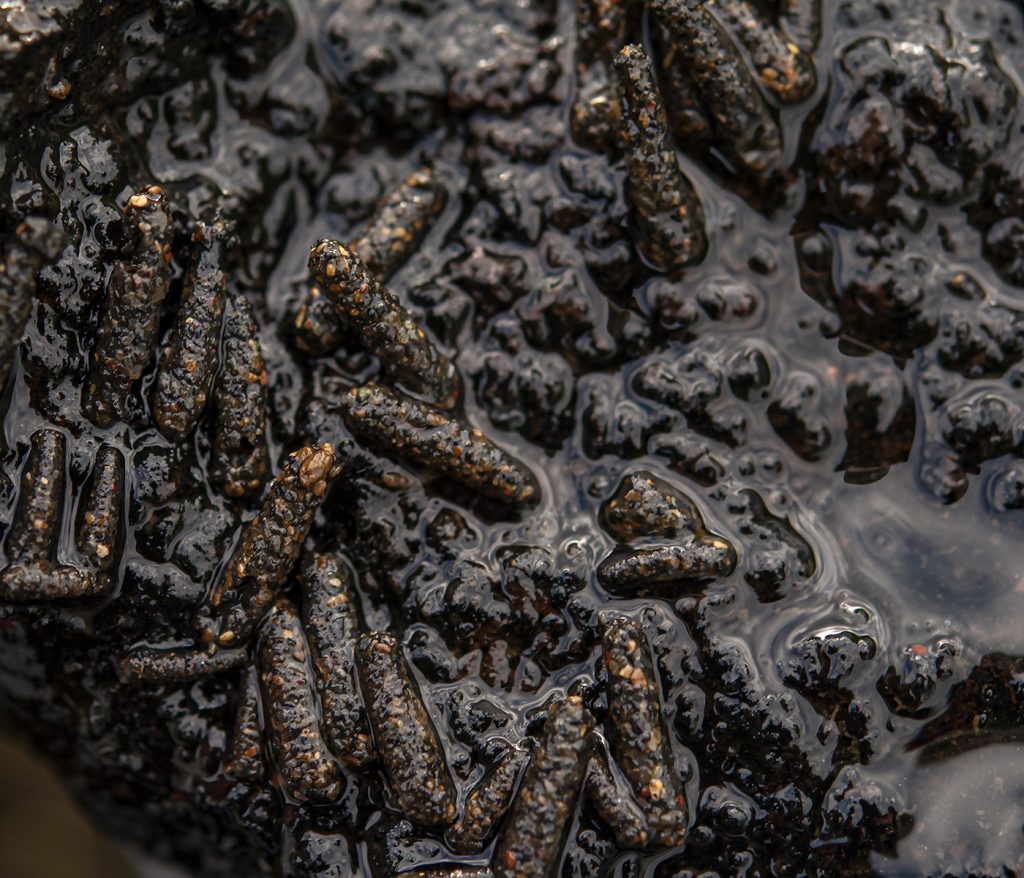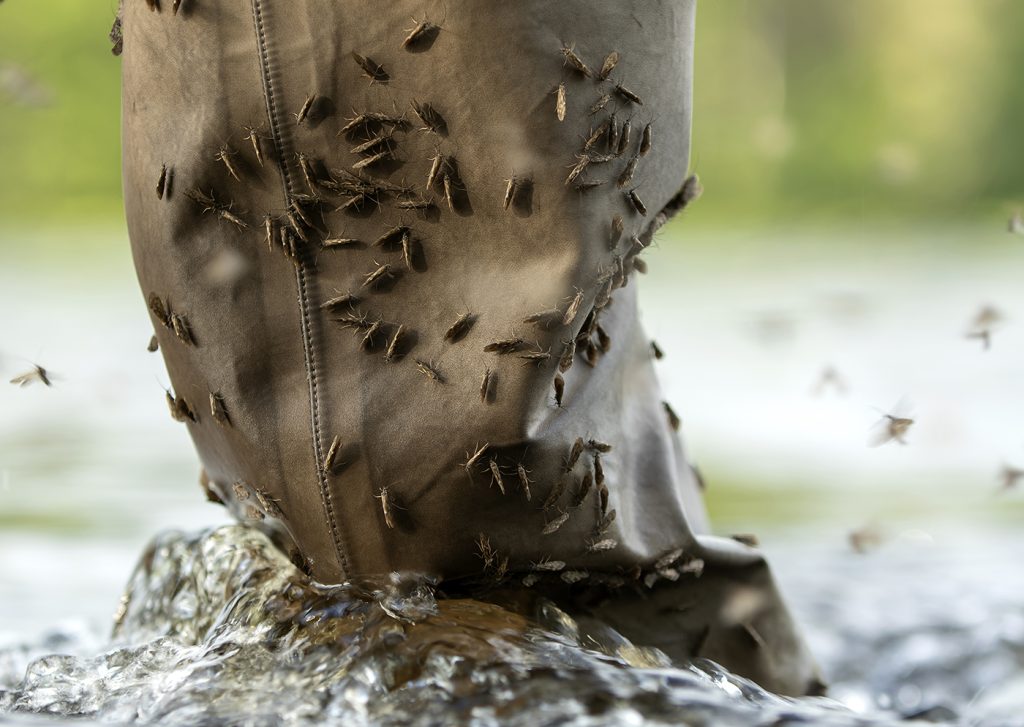
Mayflies, caddis, damsels, stone flies and other water insects appear in a variety of sizes, colours and shapes. What they all have in common is that their nymphal stage lasts a year (for some more), while the winged, adult stages are very short in comparison. Logic dictates that the nymphal stages of different water insects are far more important as a good source on a yearly basis than the winged, adult ones. Many of us prefer catching trout and grayling when they’re visibly rising, but nymph fishing is just as fun and will catch fish when the dry fly doesn’t.
They look very little alike as nymphs, just as they do as adults. Even the different species look different. Mayflies can be “agile darters”, “stone clinger”, “burrowing” etc. Caddis can be free roaming, net builders and case builders. Damsel nymphs are roaming free along the bottom. So the imitations are different too. Stonefly nymphs belong mainly in the “stone clinger category”, apart from the fact that they are of course stoneflies and not mayflies.

Furthermore they hatch in different ways too. Some break free of their nymphal shuck and/or pupae (caddis, damsels and dragon flies have a pupa-stage, which mayflies and stoneflies don’t) at the bottom and rise to the surface. Some break free in the surface. Some caddis swim to shore as pupae before hatching. Some mayflies rise to the surface as nymphs and break free of the nymphal shuck in the surface. All in all, many different behaviours in the different species.

How far you want go in ways of imitating specific insects as well as their specific behaviour is of course a matter of choice. But if you seek inspiration, our YouTube channel more or less has you covered. Have a look at some of these videos, if you’re curious.
This Hare’s Ear Nymph by Jan de Haas is an excellent, allround imitation of mayfly nymphs. A selection in different sizes, maybe weights too, will see you a long way.
Another great, general imitation, primarily of caddis pupae, maybe even gammarus too, is this Ammonite Nymph, tied by Neil Darling. The Ammonite Nymph was created by Steve Thornton and now exists in a great number of variations. As above, different sizes and colours goes far.
The Montana Nymph, perhaps one of the best known nymph patterns of all. Very popular and effective in lakes, which is a bit of a paradox, because it was originally an imitation of big stonefly nymphs, which only live in running water. Still, good to have in the box and here tied by Håkan Karsnäser.
This Heavy Weight Nymph by Hanna Bossow Vestergaard is another great allrounder. With a bead head is fishes deep, but if you need to fish fish higher up, just tie some with a few wraps of wire instead.
Especially within the Baetis family of mayflies, you can see nymphs hatching in the surface and every now and then, trout and grayling will key in on this behaviour. If you’re in a hatch, seeing rising or bulging fish that obviously aren’t taking the winged insect, try this floating nymph by John Petermann.
The big mayfly, Ephemera danica, has a two-year-nymph stage. Only very few mayflies have this apart from the E. danica. Its still water relative, E. vulgata and perhaps the giant P. Longicauda, but I’m not sure about that. They live for two years, burrowing in sand and silt, so they aren’t really on the menu year round, only when they begin to hatch. But when they do, the nymph represents a healthy offering and an imitation is often effective, fished deep or shallow. This imitation by your’s truly has done well for me in the past.
Damsel nymphs are slender, elegant creatures and present in big numbers on still waters. Trout eat them all year long. This slightly elaborate, but fairly easy imitation, created once again by your’s truly, is very effective in shallow water and imitates quite well.
Here’s another damsel imitation definitely worth carrying, by Håkan Karsnäser. A booby damsel. Fished on a fast sinking line the buoyant fly will hover over the bottom and can be deadly. I know Håkan uses them quite a lot.
Browse further on the channel, these are just a selection. Unless you’re a dry fly purist, or a streamer purist for that matter, you need a section of nymphs in the box(or boxes – who carries just one?).

We have a number of specific nymph hooks as well as a few other hooks, well suited for nymphs.
The FW 530 Sedge, really a dry fly hook for sedges, is excellent for larger and longer nymphs.
FW540 Curved Nymph is, yes – you guessed it – a dedicated nymph hook, well suited for different nymphs as well as gammarus.
Check the header picture on this page on the FW550 Mini Jig, on which you can tie many different patterns in an upside-down-configuration.
The same goes for the FW554 Cz Mini Jig, which is similar to the above, but with a longer shank.
And finally, of course, the FW560 Traditional Nymph, a traditional, straight shank medium wire nymph hook. One of my personal favourites for classic Pheasant Tails, Killer Bugs and imitations of the different “agile darters”.

